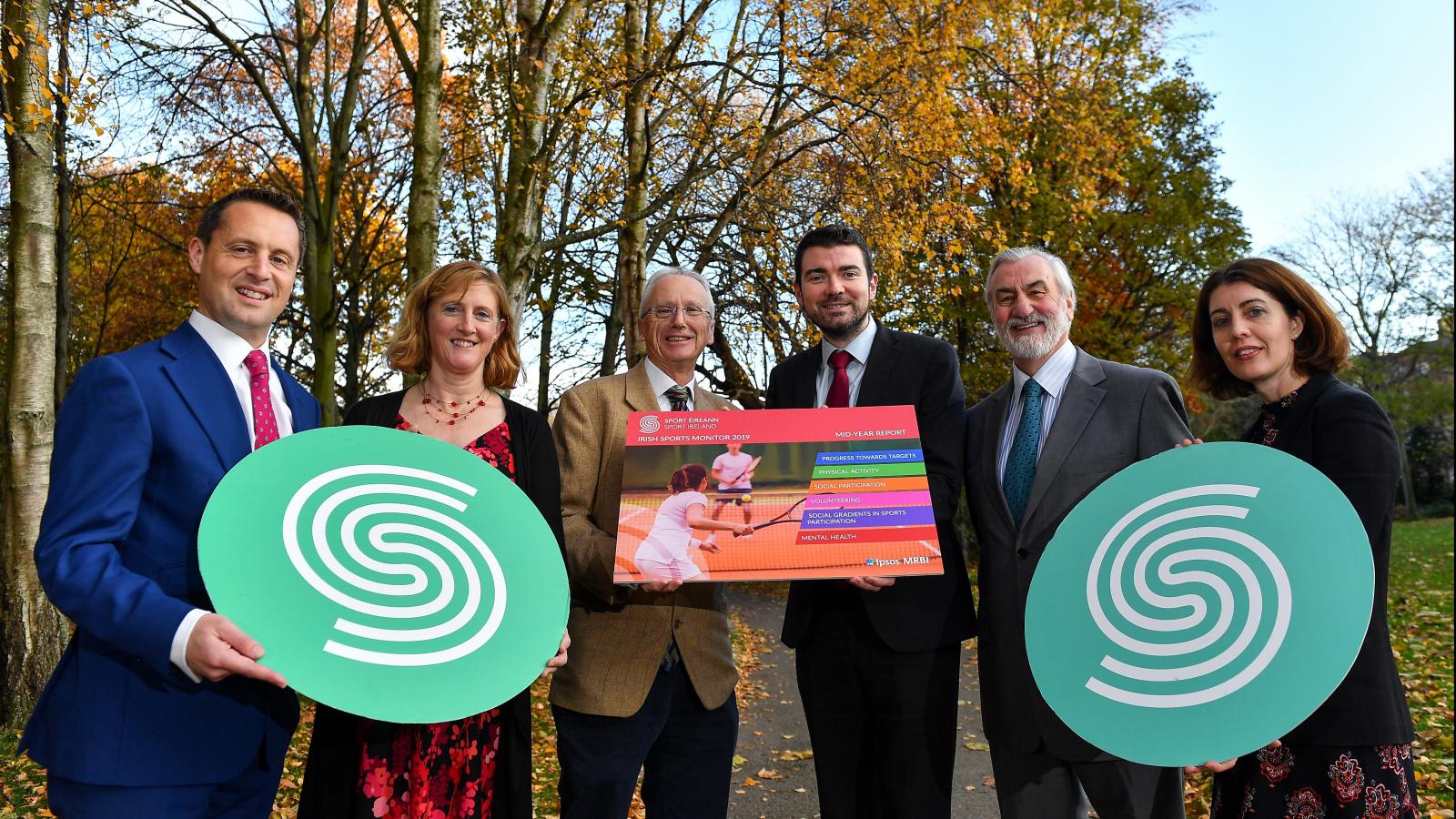
2019 Irish Sports Monitor Mid-Year Report shows good early progress towards meeting the National Sports Policy targets
Findings from the Irish Sports Monitor (ISM) 2019 Mid-Year Report published by Sport Ireland today show good progress in meeting National Sports Policy targets.
The ISM measures adult participation in sport and physical activity since 2007. The current mid-year report provides an interim update on data collected during the first six months of the year January – June 2019. It is based on interviews with over 4,200 adults aged 16 and over.
The key finding is that 46% of the Irish population (approximately 1.78 million people) participated in sport at least once a week in 2019 compared to 43% for the equivalent period in 2017. This represents an additional 100,000 regular sports participants in the country.
Aside from the increase in active participation, improvements were also reported in the numbers taking part socially in sport while the gender gap declined as did the number of adults not taking part in either sport or recreational walking.
Overall, personal exercise remains the most popular activity (16%) followed by swimming (8%), running (7%) and cycling (4%).
Speaking at the launch in Dublin today, Minister of State for Tourism and Sport, Brendan Griffin TD, welcomed the findings: “The Irish Sports Monitor mid-year report shows further progress towards the 2027 targets set out in the National Sports Policy 2018-2027. There has been encouraging increase in the number of adults actively and socially engaged in sport, meaning more people are benefitting from the physical, mental and social dimensions of sport and physical activity. It is also encouraging that the gender gap in active participation has narrowed slightly.”
Chairman of Sport Ireland, Kieran Mulvey, commented: “It is encouraging at this mid-point to see growth in the numbers participating in sport and also in social participation through volunteering, club membership and attendance at sporting events. The Board of Sport Ireland will continue to prioritise our efforts to increase participation right across all groups in our society. The insights gained from the Irish Sport Monitor are key to informing future actions in this regard.”
Olive Loughnane, Chair of the Sport Ireland Research and Participation Committee commented: “The ISM provides important data on sport, physical activity and social participation across the country. It provides valuable information to support decision making by the Committee.”
Speaking at the launch, Chief Executive of Sport Ireland, John Treacy, added: “The Irish Sports Monitor helps to inform Sport Ireland of social factors that affect participation in sport and identifies key groups that are not participating or have a low level of participation. This knowledge and insight informs our attentions and actions. The mid-year report is encouraging overall, and results are moving in the right direction.”
Data collection for the 2019 Irish Sports Monitor is ongoing until December 2019. As a result, the findings provided in the Mid-Year Report should be interpreted with caution as they could change once data collection is completed and data weighting is finalised.
Key Findings Include:
- 46% of the population regularly take part in sport representing 1.78 million regular participants. This is an increase of 100,000 additional participants since 2017.
- Gender gap in participation continues to decline from 4.5% at end 2017 to 3.9% at this mid-year point. When the ISM was introduced in 2007 the gap was 15.7%.
- Approximately 875,000 people volunteered for sport at some point during the past year.
- Those who do not participate in sport or recreational walking has decreased from 22% in 2017 to 20% in 2019.
- For the first time the disability gradient gap has decreased for those participating in sport to 16% as compared to 18% in 2017.
- The most popular sports to participate in are personal exercise (16%), swimming (8%), running (7%), cycling (4%) with the addition of dancing (3%) replacing soccer in the top 5 activities.
- The highly active report higher levels of wellbeing indicated by higher life satisfaction and happiness and lower levels of anxiety compared to their more sedentary counterparts.